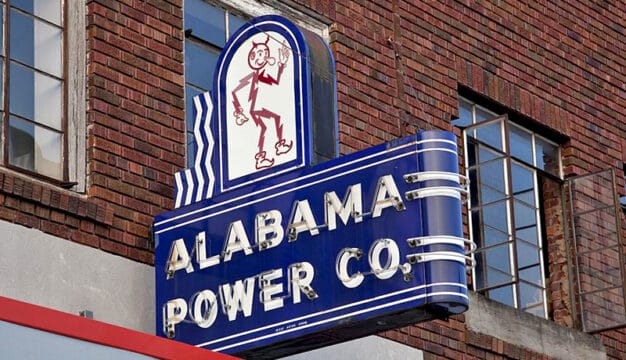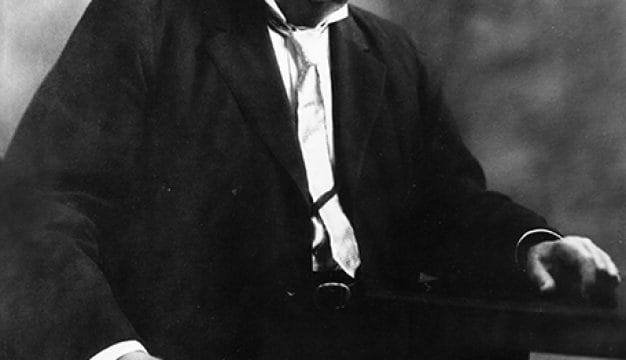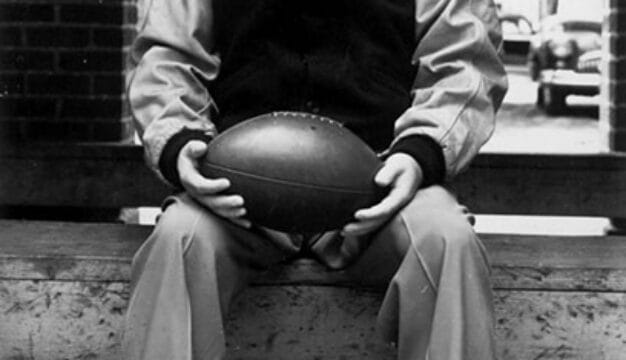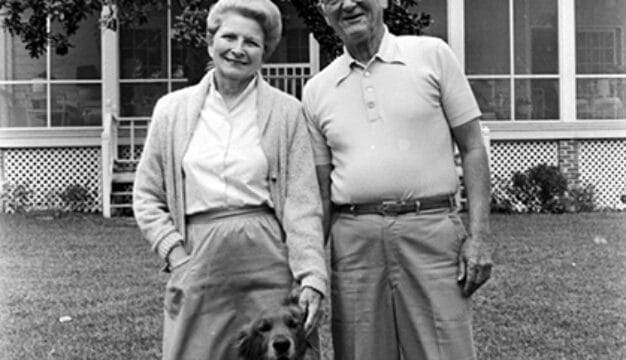William Frye
George Wilhelm (William) Frye (1822-1872) was a portrait artist from Germany who established a studio in Huntsville, Madison County. Although he also painted in Arkansas, Kentucky, and Tennessee, he earned American citizenship and lived much of his life in Huntsville. His depictions of life in the western Black Belt of Alabama were important records of the antebellum period in the state. He also tutored future Alabama artist Maria Howard Weeden for two years.
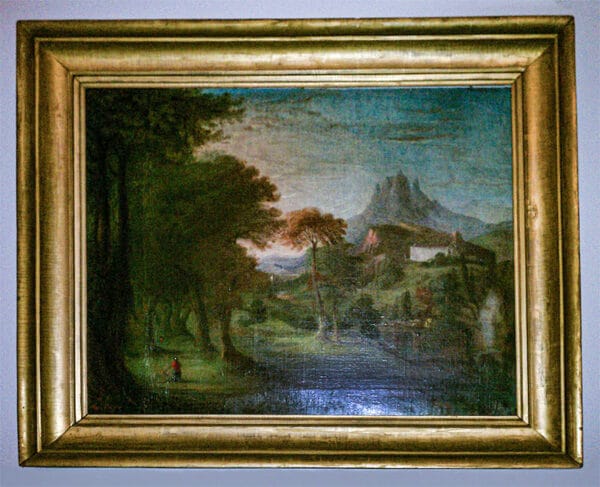 William Frye Landscape
Frye was born on September 13, 1822, in Breslau, in what was then the German kingdom of Prussia (it is now the city of Wroclaw, Poland). He later lived in Vienna, Austria, where his father was a wholesale cloth merchant. Frye was educated at Heidelberg University in Heidelberg, Germany, and studied art in Prague, Bohemia (present-day Czech Republic). In his youth, Frye took a keen interest in novels about the American frontier by James Fenimore Cooper, prompting him to travel to the United States. He landed in New York around 1840-41, where he possibly stayed for as much as a year with a cousin, Count Johann Schmidt, a German consul. While in New York, Frye also may have begun painting portraits as early as 1841, although art historians have yet to confirm this.
William Frye Landscape
Frye was born on September 13, 1822, in Breslau, in what was then the German kingdom of Prussia (it is now the city of Wroclaw, Poland). He later lived in Vienna, Austria, where his father was a wholesale cloth merchant. Frye was educated at Heidelberg University in Heidelberg, Germany, and studied art in Prague, Bohemia (present-day Czech Republic). In his youth, Frye took a keen interest in novels about the American frontier by James Fenimore Cooper, prompting him to travel to the United States. He landed in New York around 1840-41, where he possibly stayed for as much as a year with a cousin, Count Johann Schmidt, a German consul. While in New York, Frye also may have begun painting portraits as early as 1841, although art historians have yet to confirm this.
Historians are able to follow his career through court records and the newspaper advertisements Frye placed in Alabama, Arkansas, Kentucky, and Tennessee; several advertisements in Alabama newspapers announce his relocations. By 1845, Frye had settled in Louisville, Kentucky, where he painted portraits, and he opened a second studio in Huntsville by March 1847 while maintaining the Louisville location at least into 1848. On May 18, 1848, he married Virginia Hale in Huntsville; the couple would have four children. He became a U.S. citizen on August 29, 1854, in Madison County. During the next several years, Frye opened temporary studios in numerous locations around the South, including Memphis, Tennessee, and advertised his services there for four months in 1857. Frye’s growing reputation as a portrait painter prompted the Agricultural and Horticultural Society Fair of West Alabama to enlist him as a fine arts judge in 1859.
Frye painted many portraits in Alabama, particularly in the western counties of Alabama’s Black Belt region. He also painted several landscapes, including two of Demopolis, Marengo County, one of which features the sidewheeler steamboat Allen Glover. Commissioned by the Glover family, the painting depicts two homes on the far right; one is Bluff Hall, now a historical museum, and the other is the Glover home. Frye painted several portraits of Glover family members as well. Two other Alabama scenes are the Alabama River in Selma with the steamboat William Jones Jr., and Vue of the Huntsville Spring from Nature located in the center of present-day Huntsville. These scenic paintings share common characteristics, including a prominent waterway, bright blues and greens, and local structures. Another landscape, referred to as a European scene, may represent Frye’s native Austria and is now at the Weeden House Museum in Huntsville, the former home of artist Maria Howard Weeden, whom Frye privately taught in her youth. The painting hangs in the West Parlor that Weeden used as a studio.
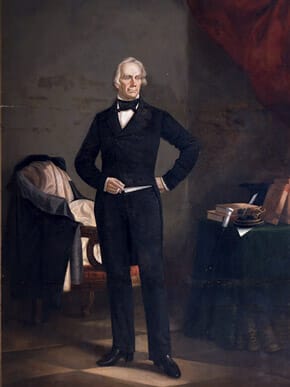 Portrait of Henry Clay by William Frye
Frye was most prolific during the 1850s and 1860s. Art historians note a change in his style during this period, an increase in sophistication in the way he depicted his subjects with particular attention to facial features and women’s fashions, such as jewelry and lace. The complexity and intricacy of his work may have been dependent upon the amount that his patrons were willing to pay. Critics note that there is some disproportionality in his renderings of children, who appear to have adult heads on a child’s frame. His works from the period after the Civil War are considered less focused and more somber, possibly a reflection of the national mood but also perhaps an outcome of his failing eyesight and health.
Portrait of Henry Clay by William Frye
Frye was most prolific during the 1850s and 1860s. Art historians note a change in his style during this period, an increase in sophistication in the way he depicted his subjects with particular attention to facial features and women’s fashions, such as jewelry and lace. The complexity and intricacy of his work may have been dependent upon the amount that his patrons were willing to pay. Critics note that there is some disproportionality in his renderings of children, who appear to have adult heads on a child’s frame. His works from the period after the Civil War are considered less focused and more somber, possibly a reflection of the national mood but also perhaps an outcome of his failing eyesight and health.
During the Civil War, Frye’s career slowed; his advertisements note that he had reduced his commissions by 25 percent, but he still found work. In January 1865, the Kentucky Legislature announced its intent to commission an artist to paint a life-size portrait of Henry Clay, the Kentucky statesman who was perhaps best known for helping to craft the Missouri Compromise of 1820 and the Compromise of 1850, which temporarily settled the sectional disputes over slavery. Frye won the commission, and his portrait of Clay, completed in 1866, earned him a $3,000 fee. The work was widely acclaimed and was exhibited in the Kentucky Capitol. Painted well after the lawmaker’s 1852 death, the portrait portrays an elderly Clay and was produced from a lithograph of Clay by William Pate. (The other contender for the prize was painted by Phineas Staunton. It was restored and placed in the U.S. Capitol in 2009. Both paintings are featured in a U.S. Senate online exhibit.) Indeed, Frye frequently advertised that he could paint from daguerreotypes or from live sittings and often worked with photographers, a common practice of the day, enabling him to produce posthumous portraits. Frye’s portrait of Clay is on permanent display in the Senate Chamber of the Old State Capitol in Frankfort, Kentucky.
Frye travelled in early 1870 to Arkansas, where he painted a portrait of the founder of the Arkansas Gazette, William E. Woodruff and his wife, Jane Eliza Mills, which is dated in March of that year. This and other works produced in Arkansas are notable in being among his final works, for Frye suffered a stroke later that year in Memphis, Tennessee, that left him with some level of paralysis. His condition worsened over time and negatively affected his speech and work. During a March 1871 trip to Mobile, Mobile County, Frye suffered another bout of paralysis and still another that July, prompting his wife Virginia to have him committed to the Alabama Insane Hospital (Bryce Hospital) in Tuscaloosa, Tuscaloosa County, on August 7, 1871. A doctor and a jury in a Madison County Probate Court in Huntsville reviewed his situation and declared him a lunatic and indigent. Modern analyses of Frye’s medical condition and symptoms suggest, however, that he suffered from diabetes and heart disease, which contributed to the strokes.
Frye died on July 1, 1872, at age 49 and was buried in the New Cemetery, at Bryce Hospital. Over the course of his career, he produced 140 known paintings; at least a third of which are signed. The majority of Fry’s works are still in private collections throughout the Deep South. The Huntsville Museum of Art has 13 works by Frye including portraits, Vue of Huntsville Spring from Nature, and a historical painting, The Legend of Florinda, which is signed and dated 1862, and is on display at various times.
Additional Resources
Adams, E. Bryding. “William Frye, Artist.” Alabama Heritage 32 (Spring 1994): 30-38.
